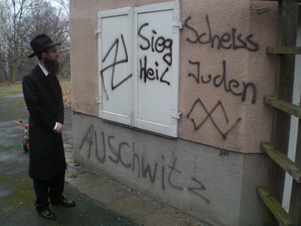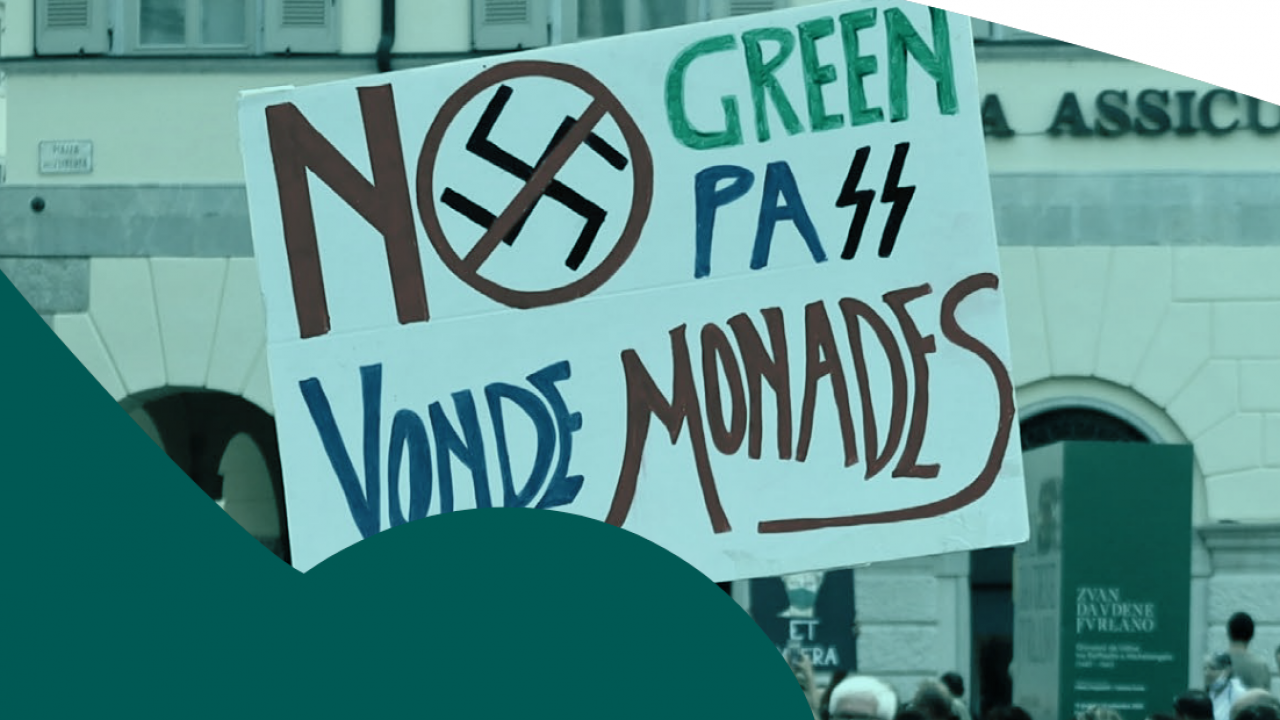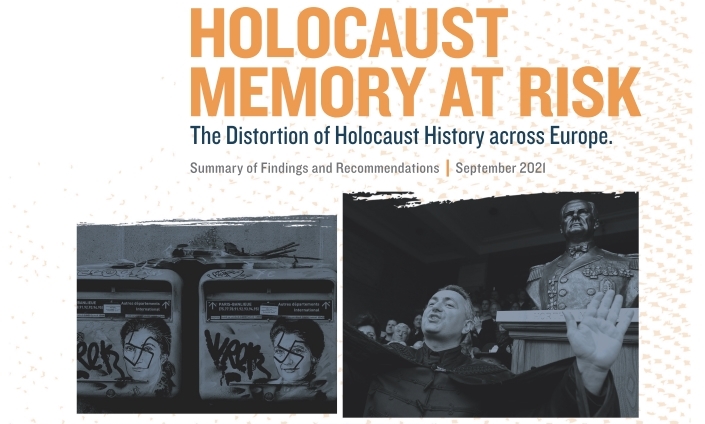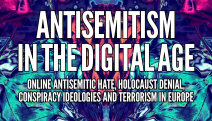When Germany was divided into two states after the Second World War, East Germany (officially known as the German Democratic Republic or GDR) portrayed itself and its socialist system as the solution to fascism. In East Germany, Communist resistance was at the center of commemorations and histories of the Nazi era while the Holocaust was at best a marginal topic. The East German state consistently played down or ignored anti-Semitism: widespread anti-Semitic attitudes were not talked about. There was no critical engagement with the anti-Semi-tism that had been at the core of Nazi ideology. This exhibition shows the many manifestations of anti-Semitism in East Germany, a topic that has not been sufficiently explored.
Outline of the Exhibition
The introduction offers an overview of the history of anti-Semitism ith a focus on the role of anti-Semitism in the workers’ movement. Anti-Semitic persecutions in the 1950s: initiated in the Soviet Union and immediately following the anti-Semitic Slanský trial in Prague in 1952, the GDR prepared its own propaganda trial. Many members of the Jewish community were interrogated, detained, and harassed. Jews were accused of “cosmopolitanism” and defamed as “agents of the West” and traitors intent on undermining the socialist state. Many Jews fled to West Berlin at the beginning of 1953. Restitution: East Germany never compensated Jews whose private property had been seized by the Nazis. The state did provide some benefits to survivors of the Holocaust, but those benefits were less generous than benefits provided to the members of the former Communist resistance. Chronicle of anti-Semitic crimes: the selection shows concrete examples of ongoing anti-Semitic activity in East Germany.
Jewish cemeteries: many Jewish cemeteries were neglected, desecra-ted and repeatedly vandalized. The state’s indifference to Jewish ceme-teries and to their desecration are emblematic of the problematic and inconsequential nature of the “anti-fascism” it so touted.
Anti-Zionism: politics and the media in East Germany portrayed Israel as an aggressor and compared it to the Nazi state. East Ger-many never established diplomatic relations with Israel, instead, it provided support to Palestinian terrorist groups in the form of strategic and military training as well as weapons.
The memory of the Holocaust: East Germany suppressed the significance of anti-Semitism in Nazi ideology. The life stories of individuals who had been persecuted by the Nazis as Jews were disregarded or neglected.
Far-right movements: the neo-Nazi scene grew through the 1980s in East Germany, carrying out racist attacks and desecrating Jewish cemeteries.
Instrumentalization of the Jewish communities: East Germany had an ambivalent relationship to its Jewish communities, giving them financial support while massively regulating their existence and thus compromising their independence. Especially in portrayals of the conflict in the Middle East, Jewish communities were often asked for anti-Israeli statements.



